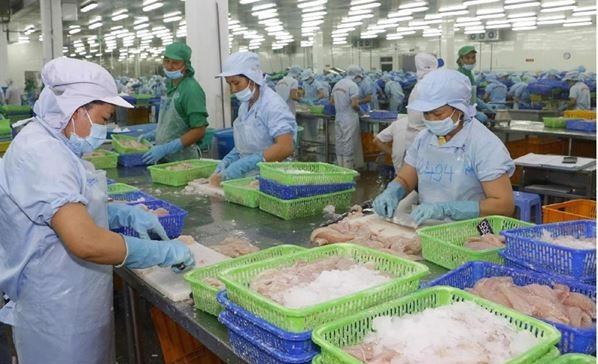
Import-export turnover as of August 15 was approaching the milestone of $500 billion, and the trade balance had a surplus of $1.39 billion.
According to the latest statistics of the General Department of Customs, Vietnam's total import-export turnover from the beginning of the year to August 15 reached $464.13 billion, of which exports reached $232.76 billionnup 17.67% over the same period in 2021, and imports reached $231.37 billion, up 6.5% year on year.
Specifically, in the first half of August, the total import-export turnover reached more than $30 billion, decreased by about 7%, equivalent to $1.13 billion compared to the second half of July 2022.
In the first half of August, there were five groups of export items with a turnover of $1 billion or more, including: phones and components ($2.71 billion); machinery, equipment, tools and spare parts ($1.94 billion); computers, electronic products and components ($1.87 billion); textiles ($1.8 billion); and footwear (more than $1 billion).
During this time, imports reached $15.24 billion, up about 7.8% compared to the second half of July 2022 (equivalent to $1.1 billion).
There were two groups of goods with import turnover reached $1 billion or more, including: computers, electronic products and components ($3.5 billion); machinery, equipment, tools and spare parts ($1.97 billion).
In the first half of August, the trade balance had a deficit of more than $100 million, but from the beginning of the year to August 15, the country had a trade surplus of $1.39 billion.
Export growth has slowed recently. This is reflected in the slowdown in orders across most sectors of industrial production. The Purchasing Managers Index (PMI) in July fell slightly to 51 points. Enterprises, instead of producing short-term, individual orders, must now focus on mass production for large batches.
High inflation rates in the US and Europe, which are the main export markets for Vietnam's textile-garment, footwear, electronics, machinery and spare parts industries, force consumers to cut spending.
Japan's economy is threatened by the re-emergence of Covid-19. Meanwhile, the wages of workers in the second quarter decreased by 0.9%, which force Japanese to tighten their spending.
The decrease in demand from the US, European, and Japanese markets will put pressure on the export sector in many countries, including Vietnam.
Le Ha